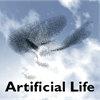信息、编码和生物功能:生命的动力
IF 1.5
4区 计算机科学
Q4 COMPUTER SCIENCE, ARTIFICIAL INTELLIGENCE
引用次数: 0
摘要
20 世纪中期,两门新的科学学科强势崛起:分子生物学和信息通讯理论。一开始,这两门学科的交叉融合如此之深,以至于遗传密码一词被普遍接受,用来描述作为氨基酸的 mRNA 三胞胎(密码子)的含义。然而,时至今日,这种协同作用并没有利用两个学科的飞速发展,而是挑战多于答案。这些挑战不仅具有重大的理论意义,而且是下一代生物学不可避免的里程碑:从个性化基因治疗和诊断到人工生命,再到生产具有生物活性的蛋白质。此外,这一问题与理论生物学所需的范式转变密切相关,而这一范式转变在很早以前就已开始,需要生物学领域以外的学科共同做出贡献。信息作为一种概念隐喻,需要转化为定量和预测模型,这些模型可以通过实证检验,并整合为一个统一的视图。要成功完成这些任务,需要广泛的多学科方法,包括人工生命研究人员,来解决这一问题。本文章由计算机程序翻译,如有差异,请以英文原文为准。
Information, Coding, and Biological Function: The Dynamics of Life
In the mid-20th century, two new scientific disciplines emerged forcefully: molecular biology and information-communication theory. At the beginning, cross-fertilization was so deep that the term genetic code was universally accepted for describing the meaning of triplets of mRNA (codons) as amino acids. However, today, such synergy has not taken advantage of the vertiginous advances in the two disciplines and presents more challenges than answers. These challenges not only are of great theoretical relevance but also represent unavoidable milestones for next-generation biology: from personalized genetic therapy and diagnosis to Artificial Life to the production of biologically active proteins. Moreover, the matter is intimately connected to a paradigm shift needed in theoretical biology, pioneered a long time ago, that requires combined contributions from disciplines well beyond the biological realm. The use of information as a conceptual metaphor needs to be turned into quantitative and predictive models that can be tested empirically and integrated in a unified view. Successfully achieving these tasks requires a wide multidisciplinary approach, including Artificial Life researchers, to address such an endeavour.
求助全文
通过发布文献求助,成功后即可免费获取论文全文。
去求助
来源期刊

Artificial Life
工程技术-计算机:理论方法
CiteScore
4.70
自引率
7.70%
发文量
38
审稿时长
>12 weeks
期刊介绍:
Artificial Life, launched in the fall of 1993, has become the unifying forum for the exchange of scientific information on the study of artificial systems that exhibit the behavioral characteristics of natural living systems, through the synthesis or simulation using computational (software), robotic (hardware), and/or physicochemical (wetware) means. Each issue features cutting-edge research on artificial life that advances the state-of-the-art of our knowledge about various aspects of living systems such as:
Artificial chemistry and the origins of life
Self-assembly, growth, and development
Self-replication and self-repair
Systems and synthetic biology
Perception, cognition, and behavior
Embodiment and enactivism
Collective behaviors of swarms
Evolutionary and ecological dynamics
Open-endedness and creativity
Social organization and cultural evolution
Societal and technological implications
Philosophy and aesthetics
Applications to biology, medicine, business, education, or entertainment.
 求助内容:
求助内容: 应助结果提醒方式:
应助结果提醒方式:


